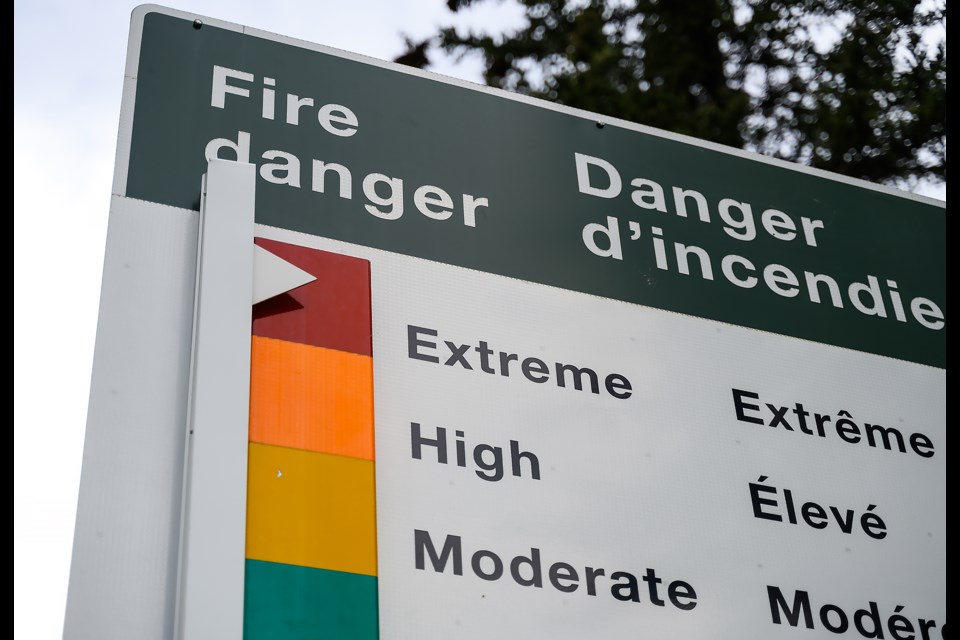BANFF – The fire danger in Banff National Park and Kananaskis Country has climbed to extreme.
Wildfire experts say the smoke blanketing the Bow Valley on and off this week is wafting in from out-of-control wildfires in neighbouring British Columbia.
The Town of Canmore's fire hazard is considered very high.
Anastasia Drummond, with Alberta Forestry and Parks, said there are no active wildfires or detections in this area.
“We do have reports of smoke crossing over from wildfires in British Columbia,” she said.
B.C. is experiencing its worst fire season on record in terms of area burned.
The Horsecreek Thief fire is burning on the slope of Mount Bruce, about seven kilometres north of Panorama Mountain Resort and 10 kilometres west of Invermere, while the St Mary’s River fire continues to burn further south in the valley near Cranbrook.
Earlier in July, a new lightning-sparked wildfire started on Mount Kindersley in Kootenay National Park, approximately four kilometres west of Highway 93 South and Kootenay River day-use area, growing to about eight hectares in size over the last two weeks.
Helicopters and initial attack crews were immediately on the fire, which was burning in steep terrain.
Parks Canada officials say intermittent rain last week helped keep fire behaviour low, with minimal growth of the fire since it started on July 10.
Patrols and mop up of hotspots were ongoing.
“Additional updates will be provided on this fire if there are changes to report such as significant growth or threats to public safety or infrastructure,” states Parks Canada in a Facebook post.
In the Calgary Forest Area (CFA), the average fire danger is now extreme, particularly in the southern portions of the region. (July 24)
Earlier in the afternoon Monday, there were reports of smoke in the Mount Shark area in K-Country.
“Our crews were already on active patrols so they confirmed that the source of the smoke was not in our jurisdiction,” said Drummond.
“We currently have no active wildfire in the Calgary Forest Area.”
Drummond said extremely warm temperatures are persisting throughout the region.
“Combined with low relative humidity and a very low likelihood of precipitation, it is expected that the wildfire danger will remain extreme for the foreseeable future,” she said.
“Wildfires that ignite in these conditions have the potential to grow quickly and exhibit volatile fire behaviour.”
The fire advisory for the CFA, which went into effect on July 20, remains. The CFA includes the Bow Valley outside of Banff National Park and neighbouring Kananaskis Country.
This means that any burning without a valid fire permit, other than a campfire in both designated campgrounds and random camping areas, is prohibited.
“Although campfires are still currently allowed in the CFA, this may change in the coming days,” Drummond said.
The CFA has responded to 40 wildfires this season which have burned 4.96 hectares. They have all been extinguished.
Since Jan. 1, there have been 905 wildfires recorded in the Forest Protection Area of Alberta that have burned 1,762,501.32 hectares.
There are currently 133 active wildfires throughout the province. Of those, 20 are classified as out of control, 50 are being held and 63 are under control. For the latest information about wildfires: www.alberta.ca/wildfire-status.




